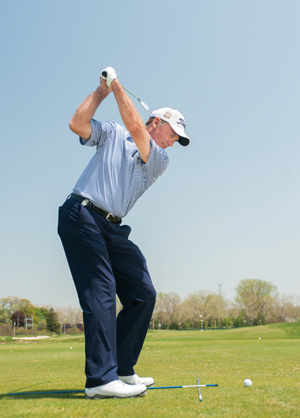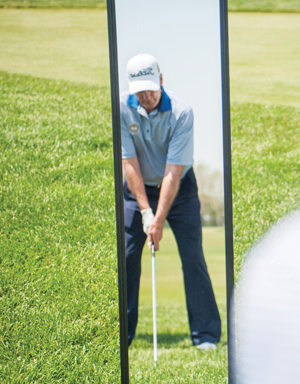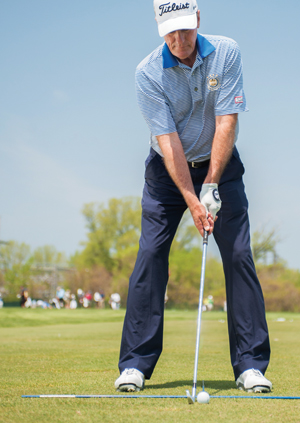
Jim White, a four-time Nebraska PGA Section Teacher of the Year and a 13-time winner of the Nebraska PGA Professional Championship, is the PGA director of golf at the West Nine & Learning Center at Firethorn in Lincoln, Nebraska.
I tell my students that every sport has fundamentals, but the fundamentals are even more critical in golf because of the preciseness of movement needed during the golf swing. After all, you’re trying to hit a little ball with a relatively small club at a distant target while swinging at a high speed. As soon as one of your fundamentals is askew, you’ve immediately put yourself in a position where you have to compensate to hit a good shot. What I do to help my students keep their swings in tune between lessons is to teach them ways to constantly monitor the state of their grip and setup, which includes alignment, posture, balance and ball position. With practice and discipline, they can do these things as well as the best players in the world – and once the fundamentals are locked in, the game gets way easier and a lot more fun.
 Practicing away from the course
Practicing away from the course
I tell my students there are a lot of things you can practice when you’re not at the golf course or range. Mirror work is great, and the feedback you get from your reflection can really help groove your setup. And watching TV gives students a great opportunity to work on their grip – just grab a club and make a good grip with the club up in the air. That will let them see their hands to make sure their grip is good, and help train them to grip the club the same way every time.

Common flaws you should catch in the mirror
There are a lot of elements to a good setup and grip. From this face-on view, for example, the student would notice their grip is too weak, their spine is tilted toward the target – causing improper head position – and the shoulders are open. What I like to do with my students is get them into a proper setup position in front of a mirror, then have them look at themselves both face-on and down the line. This allows them to take a mental picture of themselves. Then I instruct them to repeat this on their own at home a few times a week between lessons. Over time, they become very good at being able to see when their hands are getting too low, their grip is getting too weak or any number of other tiny unintended changes that might creep into their setup position. Having a good setup will become second nature to your students, and that will pay off with better results on the golf course.
Keeping your students in line
If you look out at your practice range, you’ll see all sorts of players practicing by hitting balls without any alignment aids. A lot of times they’ll think they’re lined up at a target, but really they’re off – and that leads to making compensations. I show my students how to use alignment sticks or golf clubs to make sure their feet, hips and shoulders are aligned to the target, and to ensure their ball position is good. Ball position is especially important. I like to use to alignment sticks in a T setup for practicing – keeping most of the student’s irons just forward of the middle of the stance, and sliding about one inch forward for hybrids and fairway metals, and another one inch forward for the driver. By teaching your students to work on alignment and ball position, you can help them create the correct angles that will carry through the entire swing. If your students can get their swing started on the right plane, they give themselves a chance to make a good swing.



